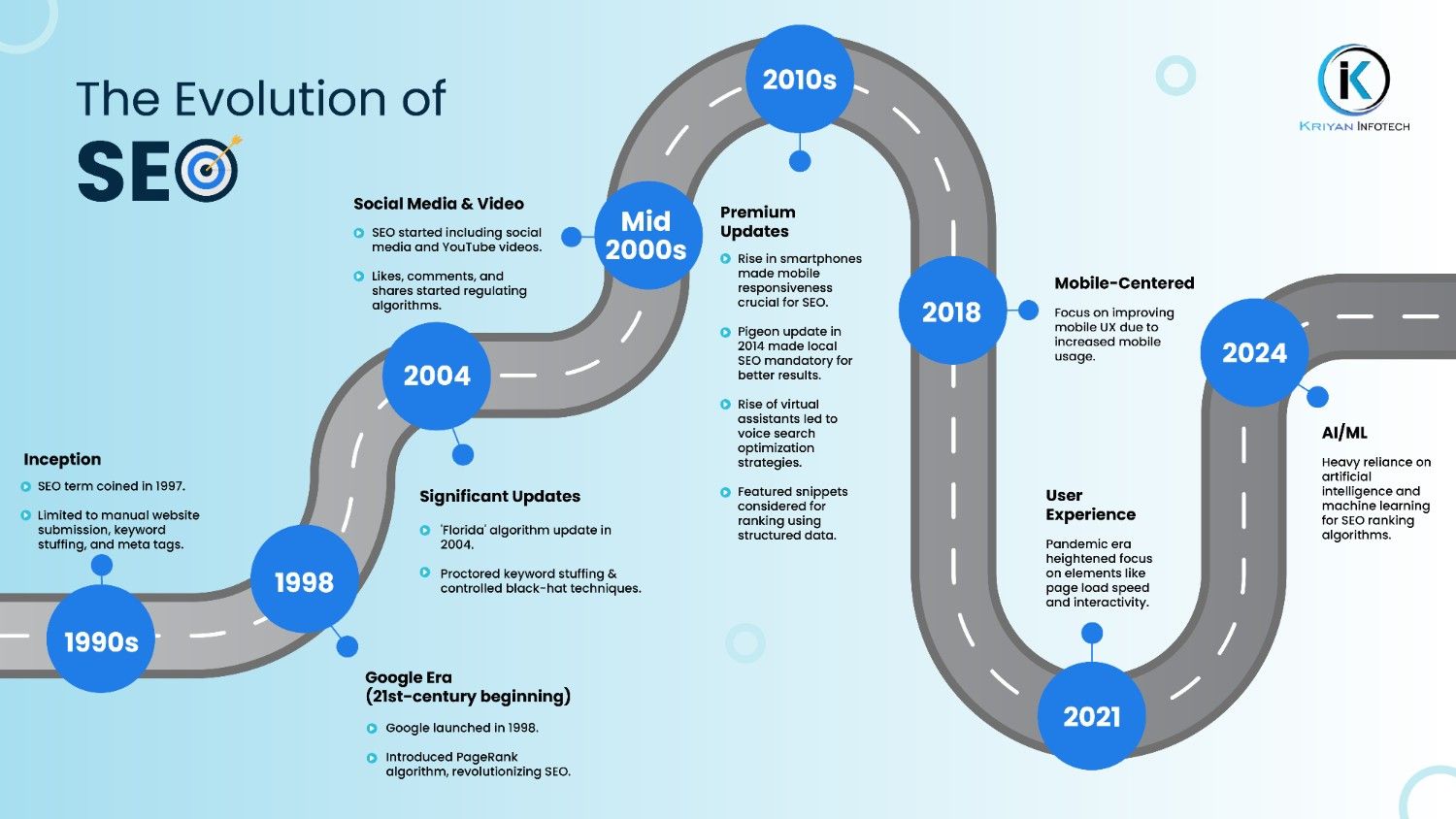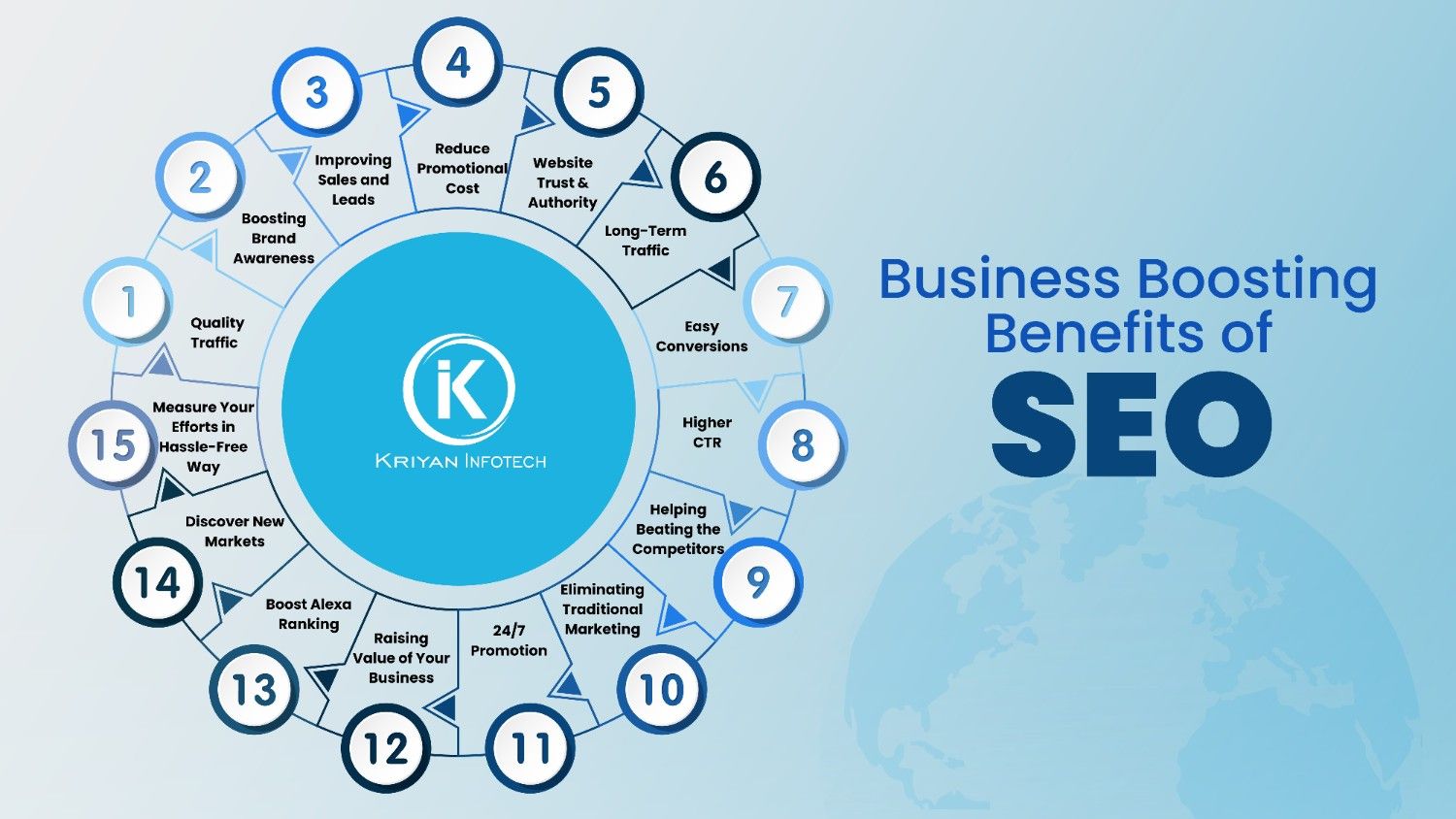
How Do You Create a Successful SEO-Friendly Website?
Introduction
SEO-Friendly Website is the demand of this era for any business. Have you thought why? We all know about the phrase “What’s seen is sold” which is used quite often in the marketing and business sphere. Not only in the professional format but even the by-default human psychology works on this methodology. Therefore, businesses work to optimize and enhance their visibility in all the required formats.
When the virtual world was still in its infancy, and people had not yet entirely resorted to it, advertisements on billboards, buses, metros, pamphlets, and other public and private spaces offered a high degree of visibility and a chance to reach the intended audience. Later, the technological revolution came into being and changed the entire landscape of perceiving visibility methodologies.
This blog post aims to provide a comprehensive analysis of the acronym SEO, encompassing its historical background, relevance, and several factors that necessitate attention when designing a website to reach the desired target audience.
History of Seo
What is SEO? An acronym heard quite frequently on social media reels. Perhaps even in the office, many of you might have come across this term discussed in the ecosystem of marketing and sales. Well, this stands for “Search Engine Optimization”, and in a nutshell, it is a tool used to increase the visibility of your website and reach the relevant audience seamlessly. Over the years, the evolution of the search engine mechanism has led to changes in its operations and intent.
Historical Timeline of SEO

1. Inception (1990s) – Decades after the invention of the internet, the search engine optimization term was first used in the year 1997. However, search engine giant Google was not invented yet, and therefore, the SEO activities were limited to manual submission of the websites in the directories, keyword stuffing, and meta tags.
2. Google Era (21st-century beginning) – Launched in 1998, Google became the pioneer in search engines and initiated a page rank algorithm to determine a website’s authority and relevance. It revolutionized the whole idea of SEO.
3. Significant Updates (2004) – Keyword strategies were being utilized unnecessarily by many companies. Therefore, in the year 2004, the ‘Florida’ algorithm update was launched where keyword stuffing was proctored and black-hat techniques were controlled.
4. Social Media and Video (The mid-2000s) – SEO in the mid-2000s around 2005 and 2006 started to include optimized content on social media platforms and YouTube videos as part of the ranking determination. The number of likes, comments, and shares also played an important role.
5. Mobile Responsiveness (2010s) – With the rise in smartphones, it became crucial for digital marketers to strictly include mobile responsiveness in the SEO segment.
6. Local SEO (Mid 2010s) – Local SEO became an important element in the early 2010s, however, with the Pigeon update in 2014 by Google, it became mandatory to apply local SEO strategies for better search results.
7. Voice Search (2010s) – With the invention of virtual assistants like Google Assistant, Siri, and Alexa, voice search became a trend. Novel SEO strategies were then formed to rank better through voice search optimization.
8. Structured Data and Features Snippets (2010) – Features snippets were taken into account for ranking the website. It was done through the use of structured data and scheme markup.
9. Mobile Centered (2018) – The popularity of mobile phones reached an all-time high post-2015. Companies started to focus on improving the mobile UX as most of their visitors were found to be on mobile devices.
10. User Experience (2021) – While user experience remained the primary focus of SEO strategies, the proliferation of internet usage during the pandemic era gave rise to updated iterations of user experience perspectives. Consequently, elements such as page load speed, interactivity, and stability became excessively critical.
11. AI/ML (Present) – At this time, search engine optimization (SEO) is heavily and exclusively dependent on artificial intelligence and machine learning algorithms to rank websites and deliver improved search results to users.
Important Elements for The SEO-Friendly Website
In the contemporary world, the majority of businesses have started their operations online or in a hybrid format. Nonetheless, those who refrain from establishing their virtual presence are facing profound challenges and will cease to exist given the current technological revolution.
The first reliable and credible element of any company’s online presence is its website. However, a website merely built with the intent of aestheticism and quality coding will not be sufficient from the marketing perspective. To remain visible and reach the right place over the internet to fulfill the business mode, it is important to include the guidelines of SEO while building the website.
1. Website Structuring
Website structuring refers to the page creation according to the use and importance.
All the important pages must be created closer to the home page and should have proper navigation to and fro.
Keywords should be injected into the pages according to the requirements.
2. Title and Description
A Unique title must be formed for each page with proper keyword insertion. The title must be between 50-60 characters.
The meta description should include the primary keywords and the content should be easily readable and understandable within 150-155 characters.
Meta title and description are important for proper indexing and must therefore be thoroughly audited before submission.
3. URL Structuring
Website URLs are the proper addresses to reach any page. Therefore, a clean and clear structure should be made.
Keywords should also be included in the URL.
Categories should be clearly defined to prevent mess.
4. Header & Footer
A clear navigation should be provided through the header and footer both with proper page linking.
Branding should be easily distinguishable with a proper responsive design for all devices.
Social media links should be included either in the secondary header or footer for proper optimization.
5. Content Structuring
Proper content tonality must be set according to the brand voice.
Content structure must be set taking into consideration the H1-H6 tags according to the SEO requirements. Proper keywords should inserted without stuffing or starving.
Content should be unique, problem-solving, easy to understand, and niche-oriented.
6. Image Optimization
The size of the images must not be too large as it increases the page load time and thus affects the SEO adversely.
Alt. Text should be written for all the images so that search engine crawlers can identify the context of the picture.
Images should strictly adhere to the theme requirement as well as the business landscape.
7. Mobile Friendly
All the pages should be made responsive to the mobile-size design.
Mobile navigation must be given priority to prevent page errors and breaks.
Headers and Footers are often not responsive and therefore must be designed according to the mobile device sizes.
8. Internal Linking
SEO also considers internal linking as an important factor in determining rank.
Proper internal links provide easy navigation and let consistency be maintained between the pages.
Internal links are also important for customer retention as they increase the engagement time and thus let him explore more on your website.
Several tools are recommended for ensuring accurate error detection and facilitating the appropriate placement of keywords.
- Google Search Console
- Google Analytics
- Bing Webmaster Tools
- Ahref/Semrush/UberSuggest
- Similarweb
Why is SEO Important?

Search engine optimization (SEO) is a highly regarded digital marketing approach that has a direct and significant impact on the online success of an organization. The utilization of rankings extends beyond mere numerical evaluations, as it serves as a potent mechanism for generating specific organic visitors to a website, augmenting the reputation of a brand, and finally enhancing revenue. Achieving high ranks on search engines fosters a sense of trust among prospective customers, thereby motivating them to further investigate the offerings of your products or services.
Additionally, it enables the expansion of one’s target audience and facilitates the maintenance of competitiveness within the digital marketplace. Furthermore, through the ongoing process of evaluating and adjusting strategies in response to search engine algorithm updates, search engine optimization (SEO) empowers firms to sustain their visibility and relevance, thus enabling them to uphold a competitive advantage.
In the contemporary era, when individuals are progressively relying on the internet to access information and make sound decisions regarding purchases, search engine optimization (SEO) has transformed from being a discretionary measure to an imperative requirement for enterprises aiming to prosper within the digital realm.
Conclusion
Search engine optimization (SEO) is not an overnight game, but rather a long-term endeavor that requires several months to implement and modify one’s marketing strategy. However, it is vital to commence the process from the outset to avoid potential time wastage during the subsequent phase of refurbishment.
The perspective of search engine optimization (SEO) significantly influences the characteristics of a website, distinguishing it from both design and development aspects. However, it is imperative to integrate the concepts of search engine optimization (SEO), design, and development to get optimal outcomes.
Please feel free to reach out to us at your earliest convenience to initiate the development of an SEO-optimized website that will effectively augment your online presence, increase your visibility, and ultimately produce a higher volume of potential customer inquiries.
Reach out to us at: marketing@kriyaninfotech.com
High-Performance Web Development: Frameworks & UX Best Practices
Introduction In a digital world shaped by instant...
How API Development Services Can Transform Your Business Systems
Introduction API (Application Programming Interface) Development Services have...
Why WordPress Development Services Are Ideal for Businesses in 2025
Introduction WordPress is leading the way for businesses...



